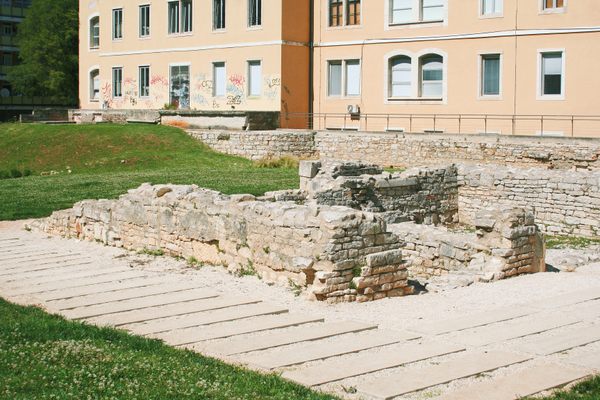Along the stunning coast of Pula’s residential area is Saint Theodore’s Quarter, known as Četvrt Sv. Teodora in Croatian, and the home of many archaeological finds. The name potentially derives from a nearby Benedictine monastery dedicated to Saint Theodore and may have existed before the Byzantine administration.
The Archaeological Museum of Istria excavated the area from 2005 to 2009, unearthing history that spanned three millennia. It covered 4,000 square meters with a maximum depth of eight meters. Uncovered were 27 archaeological layers and over 2,000 amphorae.
Researchers traced the oldest evidence of the city’s Roman history to a freshwater spring, where they found artifacts of the Histri people. Some of these include homes built from drywall and clay. The Istri (Histri) were an ancient kingdom in the Istrian Peninsula, hence their name, and even reached the Gulf of Trieste. Integral to the Temple of Hercules in its time, the site housed a stone block with a club symbol, showing Hercules as the city’s guardian. The Cult of Hercules originated in Thebes, but may have been so popular it spread past Pula. On Brač, archaeologists unearthed many related items, such as an altar and reliefs depicting Hercules.
Today, the excavation is in Pula’s busy center, north of the Pula Citadel and southwest of the Arena. In the 20th century, between the World Wars, a tobacco warehouse factory stood in the courtyard. Sadly, a fire destroyed the building in 2002.

